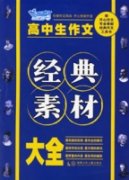高中生作文自主批改指导策略研究
约42500字。
索取号: G633.34/4.141 密级: 公 开
教 育 硕 士 专 业 学 位 论 文
高中生作文自主批改指导策略研究
作 者: 王 德 坤
院 系: 文 学 院
指导教师: 何永康 教授
学科专业: 学科教学(语文)
学位论文独创性声明
本人郑重声明:
1、坚持以“求实、创新”的科学精神从事研究工作。
2、本论文是我个人在导师指导下进行的研究工作和取得的研究成果。
3、本论文中除引文外,所有实验、数据和有关材料均是真实的。
4、本论文中除引文和致谢的内容外,不包含其它人或其它机构已经发表或撰写过的研究成果。
5、其它同志对本研究所做的贡献均已在论文中作了声明并表示了谢意。
作者签名:
日 期:
学位论文使用授权声明
本人完全了解南京师范大学有关保留、使用学位论文的规定,学校有权保留学位论文并向国家主管部门或其指定机构送交论文的电子版和纸质版;有权将学位论文用于非赢利目的的少量复制并允许论文进入学校图书馆被查阅;有权将学位论文的内容编入有关数据库进行检索;有权将学位论文的标题和摘要汇编出版。保密的学位论文在解密后适用本规定。
作者签名:
日 期:
摘 要
现代学习理论是语文新课标的理论基础。语文新课标为作文教学改革指明了方向。作文批改低效是作文教学中的一大问题,要解决这一问题,就必须从作文批改的策略研究入手。作文批改策略包括“改”的策略和“批”的策略。“改”的策略:在字、词、句及标点方面,指导学生运用“修改分项卡”的方式记录、整理作文中的错误与缺陷;在篇章结构和立意方面,指导学生运用“自我提问法”、“搁置法”、“案例法”、“出版法”等查找作文中的问题,并对问题进行修改。“批”的策略:定量评价方面,指导学生采用“诵读法”评定作文的等级优劣与分数高低;定性评价方面,指导学生运用“循环互批法”对学生作文中的亮点与不足加以评点,并以编辑文集方式展示交流学生的成果;批语方面,指导学生运用“赏识性原则”、“针对性原则”、“商讨性原则”、“引导性原则”、“启发性原则”、“诚挚性原则”等撰写批语。学生自主批改的指导过程是一个由浅入深、由易到难的渐进过程,凸显了学生的主体性地位,体现了新课标的精神,使学生成为批改的主人和受益者。
【关 键 词】 高中作文 学生自改 学生自批 指导策略
Abstract
The Modern Learning Theory is the New Chinese Curri Criterion which points out the new direction for the reform of position teaching. The low efficiency of correcting and evaluating the positions is one of the main problems in position teaching. In order to solve the problem, I think we should begin with the strategy research of correcting and evaluating. The strategy includes the strategy of correcting and that of evaluating. The former strategy guides the students to record and to arrange the mistakes and the defect by using the way of classifying card for correction in the aspect of words, sentences, and punctuation as well as guides the students to find out the defect and to correct the defect using the way of asking themselves , the way of setting aside , the way of publishing, the way of cases and so on in the aspect of the structure of writing and the main idea of the passages. The latter guides the students to appraise the good ranks or the bad ranks as well as the high grades or the low grades by using the way of reading aloud in the aspect of quantitative evaluation and guides the students to evaluate the merits and the demerits using the way of correcting and evaluating one another and to exchange the students’ achievements by using the way of qualititative evaluation. It guides the students to indite the annotation using the principle of appreciation, the principle of guide , the principle of allusion, the principle of discussion, the principle of inspiration and the principle of sincerity, etc. in the aspect of the annotation as well. The directing process of the students’ correcting on their own is in progress gradually from the easy questions to the hard questions which shows the position of the main body and the spirit of the New Curri Criterion, making the students the owners and beneficiaries of correcting.
【key words】the position of High School
position Correcting of the students themselves
position Evaluating of the students themselves
Guiding Strategy
目 录
前言…………………………………………………………………………………………… 1
第一章 由现代学习理论看语文教学和作文批改……………………………………………8
第一节 现代学习理论与语文教学……………………………………………………… 8
一 、行为主义学习理论与语文教学…………………………………………………8
二 、认知主义学习理论与语文教学…………………………………………………9
三 、建构主义学习理论与语文教学……………………………………………… 11
第二节 高中作文批改的原则、内容及方式……………………………………………12
一、作文批改的原则…………………………………………………………………12
二、作文批改的内容…………………………………………………………………13
三、作文批改的方式 ……………………………………………………………… 14
第二章 高中生作文自主修改指导策略…………………………………………………… 17
第一节 培养高中生修改作文的自觉性…………………………………………………17
一、高中生作文修改现状……………………………………………………………17
二、高中生作文修改自觉性的指导方法……………………………………………18
第二节 教给高中生修改作文的方法……………………………………………………18
一、字词句等的修改方法指导…………………………………………………










